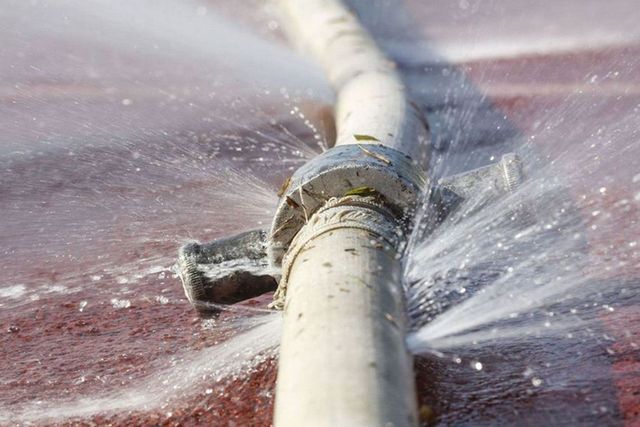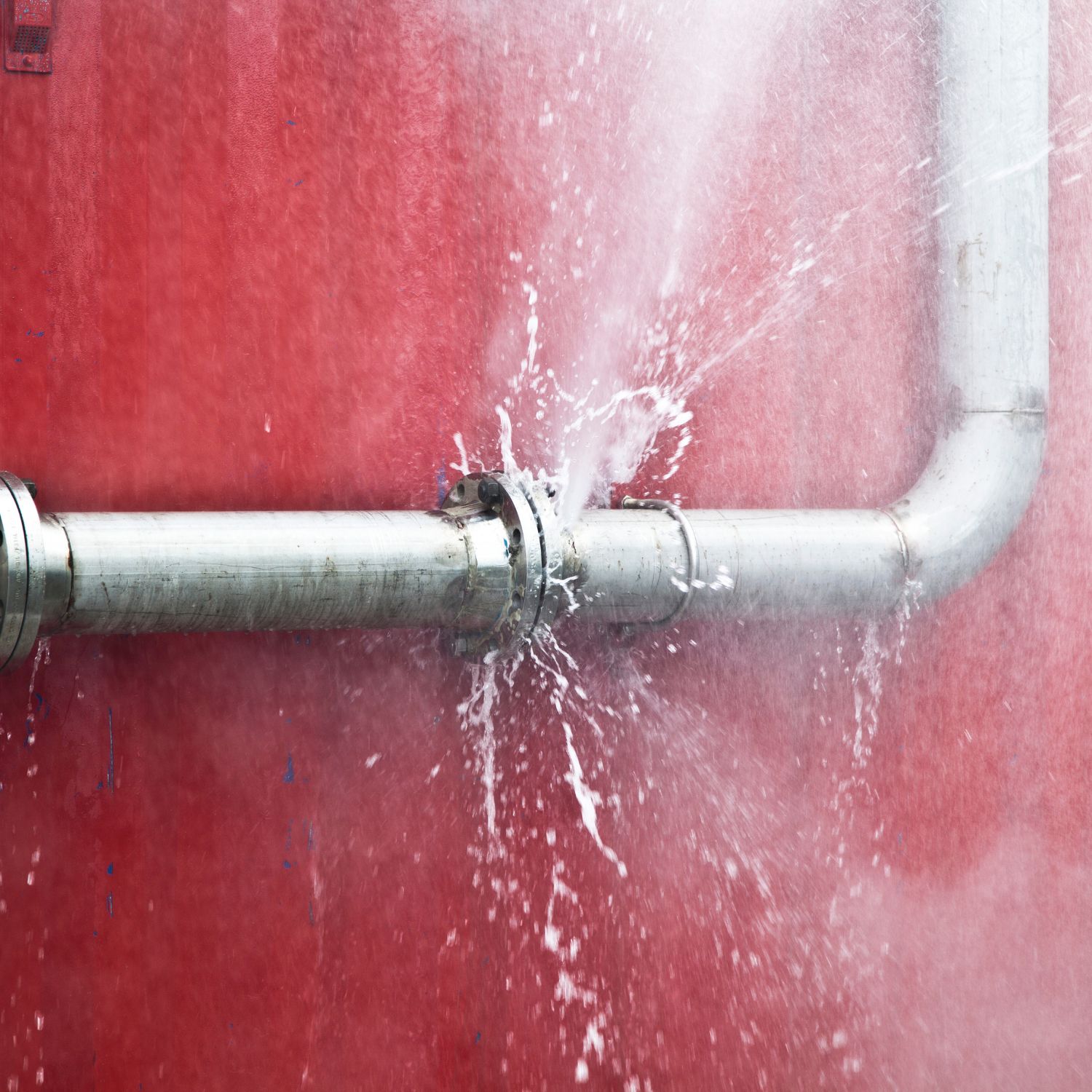How to Fix a Burst Pipe Yourself: A Step-by-Step Guide for Homeowners
How to Fix a Burst Pipe Yourself: A Step-by-Step Guide for Homeowners
Blog Article
Protecting Against Ruptured Pipeline: Important Tips to Secure Your Plumbing
Preventing burst pipelines is a vital issue for homeowners, particularly during cooler months when the danger of freezing is enhanced. Executing calculated measures such as proper insulation, routine assessments, and preserving constant interior temperature levels can significantly reduce the probability of pipe failure. Additionally, comprehending emergency situation treatments outfits house owners to respond quickly to prospective pipes problems. Several are uninformed of the specific vulnerabilities that their pipes might encounter. Discovering these susceptabilities can give invaluable insights right into guarding your plumbing system properly.
Understand Pipeline Vulnerabilities
Recognizing pipeline vulnerabilities is important for reliable plumbing upkeep and protecting against expensive damage. A number of variables add to the vulnerability of pipelines to bursts, including material make-up, age, and environmental problems. Older pipes, specifically those made from galvanized steel or polybutylene, commonly weaken with time, leading to increased danger of leakages and tears.
Temperature level fluctuations can likewise dramatically impact pipe stability. In chillier climates, water caught in pipelines can ice up, applying and increasing stress on the pipe walls, which might eventually result in a ruptured. High water stress can strain pipes, especially at joints and bends, enhancing the likelihood of failure.

Insulate Pipeline Appropriately
Appropriate insulation of pipelines is important for protecting against cold and succeeding ruptureds during winter (burst pipe). Shielding your plumbing system successfully safeguards against temperature level goes down that can lead to expensive damages. Begin by identifying at risk areas where pipelines are exposed to outside temperature levels, such as basements, attic rooms, and exterior walls
Use foam pipe insulation sleeves or cover insulation tape around these areas to offer a protective obstacle. Guarantee that all areas of the pipelines, particularly those with minimal heat exposure, obtain appropriate insulation. Pay unique attention to joints and installations, as these are more at risk to freezing.
When shielding, it's necessary to choose products that fulfill neighborhood building ordinance and are appropriate for the particular setting. For circumstances, fiberglass insulation is typically advised for its thermal resistance residential or commercial properties - burst pipe. In addition, take into consideration using warm wires or tape in severe conditions, which can be connected in to provide additional warm
Frequently check protected pipelines for any kind of indications of wear or damages, as compromised insulation can diminish its performance. By taking these positive steps, you considerably reduce the risk of pipe bursts, making certain a trustworthy plumbing system throughout the cold weather.
Maintain Constant Temperature
A secure interior temperature is important for stopping ruptured pipes during the frigid months. When temperatures decline, water within pipelines can ice up, producing and increasing pressure that might ultimately trigger the pipelines to ruptured. To mitigate this danger, property owners ought to keep a regular temperature level throughout their living area, ideally no less than 55 ° F(13 ° C)Using a programmable thermostat can assist take care of indoor temperature levels properly, making sure that areas with plumbing continue to be warm even when the home is unoccupied. Pay special attention to locations that are much more at risk to chilly, such as cellars, garages, and attics. Keeping cupboard doors open under sinks can additionally allow warmer air from the home to distribute around plumbing.
Additionally, it is prudent to permit taps to leak slightly throughout extreme cold snaps. This minor flow of water can avoid cold by alleviating stress within the pipelines. Moreover, throughout particularly extreme climate events, think about briefly suspending any kind of nighttime setbacks on your thermostat to keep a constant cozy setting. By executing these approaches, house owners can substantially minimize the danger of pipe ruptureds and safeguard their plumbing systems against the harsh winter season aspects.
Routinely Check Plumbing
Regular inspections of plumbing systems are vital for stopping burst pipelines and preserving overall home honesty. Throughout these inspections, it is crucial to analyze visible pipes for indications of deterioration, leakages, or wear.
Additionally, examining joints and connections is essential, as these points are often susceptible to leakages. Property owners must also examine water stress degrees, as excessive pressure can strain the plumbing system and increase the danger of pipeline ruptureds.
Take into consideration scheduling professional pipes evaluations at the very least when a year, specifically before wintertime, to ensure your system is prepared for chillier temperatures. By being aggressive in your approach, you can secure your home versus the pricey and turbulent consequences of burst pipelines.
Know Emergency Situation Procedures
Recognizing emergency procedures is important for every single house owner, especially after carrying out normal pipes examinations. Being prepared for a plumbing emergency situation can significantly reduce damage and save prices. Locate your primary water shut-off shutoff; it is typically found near the water meter or where the major line enters your home. Acquaint on your own with its procedure, as shutting about his off the water supply promptly can avoid considerable flooding.
Following, keep important tools handy. A plumbing emergency set ought to include a wrench, bettor, and towels, as well as a flashlight and a bucket for little leaks. In addition, consider having the call info for a trusted plumbing readily offered, should the situation intensify beyond your control.
If you identify a leakage or burst pipeline, instantly turn off the water system and notify your plumber. Record the damage with photos for insurance policy functions. Be mindful of the indicators of possible pipes concerns, such as uncommon water pressure fluctuations or damp spots on wall surfaces
Inevitably, positive understanding and quick action are crucial in taking care of plumbing emergency situations, guaranteeing your home stays secured and reducing potential you can check here damages.

Verdict
To conclude, protecting against ruptured pipes necessitates a diverse approach that consists of understanding pipe vulnerabilities, correct insulation, preserving constant interior temperatures, routine examinations, and understanding of emergency situation treatments. By carrying out these essential techniques, the threat of pipes failings can be dramatically lowered, consequently ensuring the durability and effectiveness of the plumbing system. Positive steps not only protect against possible damage however likewise add to overall water preservation and the security of property.
In colder climates, water entraped in pipelines can freeze, expanding and applying pressure on the pipe walls, which might inevitably lead to a burst. When temperature levels decline, water within pipelines can freeze, broadening and developing stress that may ultimately cause the pipes to burst. By applying these methods, have a peek at these guys house owners can considerably minimize the danger of pipe bursts and guard their pipes systems versus the rough winter components.

Report this page